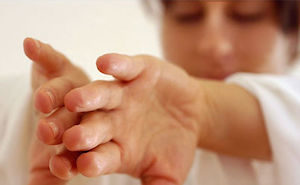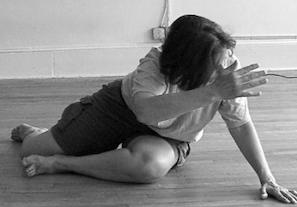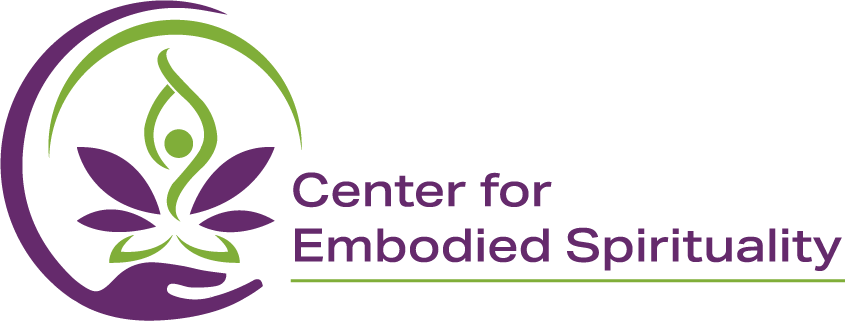Dance Movement Therapy
What Is Dance Movement Therapy (DMT)?
DMT is a form of holistic, somatic (body-oriented) psychotherapy that uses movement to effectively address a wide range of issues, including anxiety, depression, eating disorders, overwhelming stress and, especially, trauma.
 Although movement has been a method of individual and community healing within tribal cultures throughout the ages, professional dancer and dance teacher Marian Chace is recognized as the mother of DMT, which is now recognized as a unique form of therapeutic treatment. Dance movement therapy does not involve performance and does not generally include or look like what many consider dance. In DMT sessions, movement is initiated from the internal impulse, rather than specific instructions or “choreography.” You do not have to be a dancer, enjoy traditional forms of dancing or even feel comfortable in your body to participate in DMT.
Although movement has been a method of individual and community healing within tribal cultures throughout the ages, professional dancer and dance teacher Marian Chace is recognized as the mother of DMT, which is now recognized as a unique form of therapeutic treatment. Dance movement therapy does not involve performance and does not generally include or look like what many consider dance. In DMT sessions, movement is initiated from the internal impulse, rather than specific instructions or “choreography.” You do not have to be a dancer, enjoy traditional forms of dancing or even feel comfortable in your body to participate in DMT.
Movement, at its core, is natural expression. It can speak a different kind of truth when words cannot. DMT can help you release distress and follow your body’s innate wisdom toward a more satisfying life.
Rediscovering The Joy Of Natural Expression
For all humans, movement is innate. Babies and infants do not limit their physical expression and naturally move to music. If you were to observe a group of small children on a playground, you would see that most of them are much the same—they jump up and down with excitement, cross their arms in anger and pout in sadness or frustration. When music plays, children dance along. Young children do not push their emotions underground, where they will fester and build; instead, they bring them right to the surface, sequencing through them and releasing them in the present moment.
 In later childhood, however, we are taught to limit our expressivity in order to fit into societal or familial norms. In some ways, this is a good and useful thing. Imagine a world where adults use temper tantrums to get their way. Unfortunately, learning restraint can also mean developing a critical self-observer that squashes healthy and necessary self-expression. This is especially true for those who experienced abuse or another trauma and learned that the “wrong” movement could lead to physical danger or painful emotions, such as shame or embarrassment.
In later childhood, however, we are taught to limit our expressivity in order to fit into societal or familial norms. In some ways, this is a good and useful thing. Imagine a world where adults use temper tantrums to get their way. Unfortunately, learning restraint can also mean developing a critical self-observer that squashes healthy and necessary self-expression. This is especially true for those who experienced abuse or another trauma and learned that the “wrong” movement could lead to physical danger or painful emotions, such as shame or embarrassment.
Like many adults, you’ve likely become highly self-conscious of the way your body occupies space. You might feel uneasy in your body and hyper-aware of what others might think about your gestures and movement. Movement therapy and embodimenteducation can help you relieve this self-criticism and doubt by reconnecting you with this elemental experience of physical expression. When you stop worrying about appearances, you can invite your innermost impulses and sensations to the surface and literally move toward healing.
The Process Of Healing Through Movement
Liberated movement can help you integrate your mind, body and spirit, allowing you to experience yourself as a whole, fully embodied being. Then, you can shed the delusions, critiques and hardness restricting your life and welcome home your deep inner wisdom. You can start to live from your Higher Self.
Your psyche uses physical sensations to bring important insights and observations to your conscious awareness. DMT end embodiment practices can help you identify sensations, like alarm bells, that signal something is out of alignment. These include muscle tension, stomach issues, rapid breathing, clenched or fluttering hands and more. By learning to listen to and follow your internal movement impulses, you can empower yourself to trust your intuition and wisely address concerns. And, you can feel equipped to recognize and soothe physical and emotional distress before it becomes overwhelming.
 You can give your body new opportunities to speak in its unique language. My work with individuals and groups frequently involves Authentic Movement (AM), a therapeutic form centered around simple, un-directed and un-choreographed movement. You are invited to close your eyes and follow your impulses to move (or not move) in any way that you wish. I will sit with you as a witness, silently and non-judgmentally observing. Feeling seen, held and accepted is a key component of this profoundly healing work.
You can give your body new opportunities to speak in its unique language. My work with individuals and groups frequently involves Authentic Movement (AM), a therapeutic form centered around simple, un-directed and un-choreographed movement. You are invited to close your eyes and follow your impulses to move (or not move) in any way that you wish. I will sit with you as a witness, silently and non-judgmentally observing. Feeling seen, held and accepted is a key component of this profoundly healing work.
The goal is to provide a safe space for you to explore the unconscious psyche through the medium of movement. You can also connect with the creative energy that’s been stifled by strict self-editing. Authentic Movement is a doorway to not only intense emotions, powerful insights and higher consciousness, but also meaningful play and fun!
In any form, movement therapy is a unique holistic approach to healing that can have profound results. Combined with other holistic counseling and somatic therapy practices, such as mindfulness and Internal Family Systems, it can have a profound positive impact on your overall functioning and happiness.
My Dance Movement Therapy Background
Movement has always been part of my life. I began taking dance classes as a child, before I entered school. I started out with standard dance classes, such as jazz and modern dance. By my late teens, I realized that I wasn’t so interested in how movement looked. Instead, I loved the internal feeling that came with movement—the feeling of expression.
I moved out of performance-based dance and into more internally-focused work, including embodied movement, which invites creative expression of your body’s unique range of movement. This led me to explore Authentic Movement, Contact Improvisation and Japanese Butoh. Through all of these practices, I gained a deep appreciation of the profound benefits of movement. I discovered a new ability to move through challenging feelings. This sparked a dramatic shift in my personal healing work.
moved out of performance-based dance and into more internally-focused work, including embodied movement, which invites creative expression of your body’s unique range of movement. This led me to explore Authentic Movement, Contact Improvisation and Japanese Butoh. Through all of these practices, I gained a deep appreciation of the profound benefits of movement. I discovered a new ability to move through challenging feelings. This sparked a dramatic shift in my personal healing work.
I began working with DMT as a client in the 90s. Because the work was so powerful for me, when I decided to become a therapist, I knew it needed to be part of my practice. I earned a master’s degree in Somatic Counseling Psychology, with a dual emphasis in DMT and Body Psychotherapy. As my practice has moved beyond psychotherapy, I now offer embodiment practices rooted in somatic awareness and integration to help people live into their fullenst self.
Let Your Body Lead The Way
I invite you to contact me to schedule a free phone consultation to find out how embodiment training and authentic movement can accerlerate your healing and creative expression.
Resources


